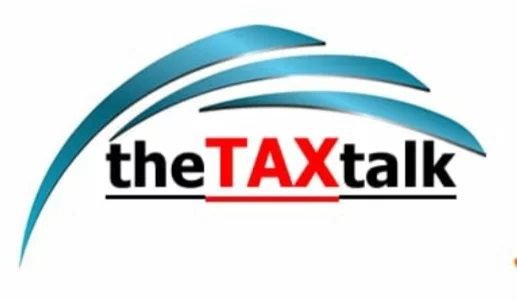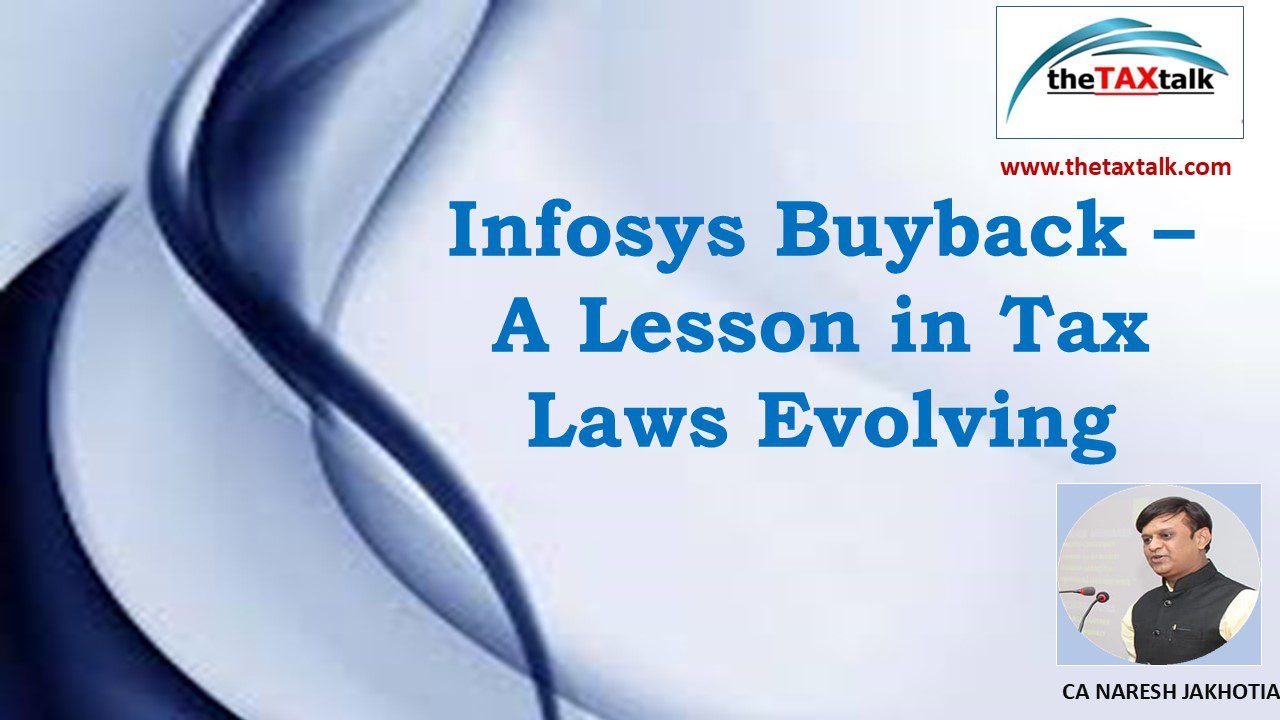![]()
Infosys Buyback – A Lesson in Evolving Tax Laws
No matter how smart or profitable a transaction looks, if tax isn’t factored in, the final numbers can tell a completely different story. Tax planning isn’t a one-time ritual performed in March; it’s a dynamic process that must evolve with the law, the economy, and, occasionally, the Government’s mood swings.
Governments are relentless in plugging “loopholes” that taxpayers lovingly call “smart planning.” Every few years, what was once an ingenious idea suddenly turns into an expensive mistake. One shining example of this evolution — or, depending on how you look at it, revolution — is the recent change in the taxation of buyback of shares. Once upon a time, buyback was the darling of tax planners. Today, it’s a nightmare in disguise. Let us discuss.
The Glory Days of Buyback of Shares:
Before 1st October 2024, the tax law surrounding buyback of shares was simple, clear, and actually beneficial. Under Section 115QA, when a company decided to buy back its own shares, the company was liable to pay an additional income tax @ 20% on the distributed income i.e. on difference between the buyback price and the issue price. For shareholders, this was pure bliss. The amount they received from the company was completely exempt under section 10(34A). In short, the company paid the tax, the shareholder got cash, and the tax department stayed happy. For promoters and investors alike, it was a neat, tax-efficient way to return surplus funds to shareholders. Buyback became a popular, tax-efficient alternative to dividends. It was, as some would call it, the golden era of “win-win” tax planning.
The 2024 Makeover – From Win-Win to Lose-Lose:
Then came the Finance (No. 2) Act, 2024, and with it, the Government’s decision to rewrite the rules. From 1st October 2024, a new clause — Section 2(22)(f) — was inserted into the Income-tax Act, 1961. It stated that any payment made by a company on purchase of its own shares shall be deemed to be dividend income in the hands of the shareholder.
With a single legislative stroke, the tax liability shifted from the company to the shareholder. What was once exempt now became fully taxable as income from other sources. To ensure there was no confusion or double taxation, Section 46A was amended to specify that for such transactions, the “consideration” for computing capital gains shall be deemed to be nil. That means — no capital gains tax liability and the entire investment would be a loss, either as short term or long term. So, buyback, which once stood proudly in the “capital gains” corner, was now pushed into the “dividend” category — a zone notorious for higher tax rates.
The Infosys Example – When ₹ 290 Gain Turned into ₹ 305 Loss:
Let’s look at a real-world example to understand the practical impact of this change. Infosys Ltd recently announced a buyback of shares at ₹ 1,800 per share, while its market price hovered around ₹ 1,510 — a tempting premium of ₹ 290. But here’s the catch: the ₹ 1,800 received from the company is now treated as dividend income (taxable up to 35.88% for high-income investors). That translates into a tax of roughly ₹ 646 per share, leaving the shareholder with ₹ 1,154 net after tax. Now, compare that with the alternative. If the same shareholder sells the shares on the stock exchange instead of offering them in the buyback, and the holding is long term, the gain would be taxed at just 14.95% (12.5% plus surcharge and cess). Assuming the cost of acquisition (as per grandfathering) was ₹ 1,166, the LTCG on a sale at ₹ 1,510 would be ₹ 344, attracting tax of about ₹ 51 only. In that case, the net post-tax amount would be ₹ 1,459 as against ₹ 1,154 in the buyback route. So, the buyback — which appeared to offer a gain of ₹ 290 — actually reduced the investor’s post-tax value by ₹ 305 per share! No wonder the Infosys promoters opted out. When your “bonus” comes with a bigger tax bill than the benefit, the smartest move is often to do nothing.
The Ironic Twist – Advantage Non-Residents!
Now here’s the delicious irony. While Indian shareholders face this steep tax burden, foreign investors are smiling. Thanks to the network of Double Taxation Avoidance Agreements (DTAAs), dividends paid to non-residents attract concessional rates. Under most Indian treaties, the rate of tax on dividends ranges between 5% and 20%, depending on the shareholding pattern and treaty jurisdiction (for instance, 5% under the India–Mauritius treaty, 10% under India–Singapore, and 15% under India- US treaty). By invoking the DTAA, non-residents can substantially reduce the tax rate on buyback proceeds.
The Government’s intent behind the amendment was to align buyback taxation with dividend distribution. But the unintended consequence is that resident shareholders are now worse off, while foreign investors enjoy a tax bonanza.
To top it off, as promoters opt out of the buyback, the number of shares available for non-resident participation increases — giving them a bigger slice of a very tax-friendly pie. It’s almost poetic: in trying to ensure fairness, we may have handed a bigger advantage to the outsiders.
The Final Word:
The Government’s move to tax buybacks as dividends is understandable in intent — to plug a perceived loophole — but the outcome has been uneven. Resident investors are facing an unexpectedly high tax hit, while non-resident investors are reaping benefits thanks to favorable treaty rates. It’s a striking example of how even the best-intentioned tax reforms can have unintentional winners and losers.
The Larger Lesson – Tax Planning is Not a Constant:
This entire episode offers a larger takeaway — tax planning is not a constant.
It must evolve with every Finance Act, every circular, and every amendment. The trick that worked last year might turn into a trap this year. What was once the cleverest route to save tax can become the costliest road to tax. The buyback saga captures this perfectly — a law that once encouraged buybacks now penalizes them. It’s a timely reminder for investors and businesses alike that tax planning must be reviewed periodically — not out of fear, but out of prudence. The message is clear – Never treat tax planning as a “one-time setup.” It’s not a monument carved in stone; it’s a living document that demands regular revision. Because in taxation, as in life, the only constant is change.


